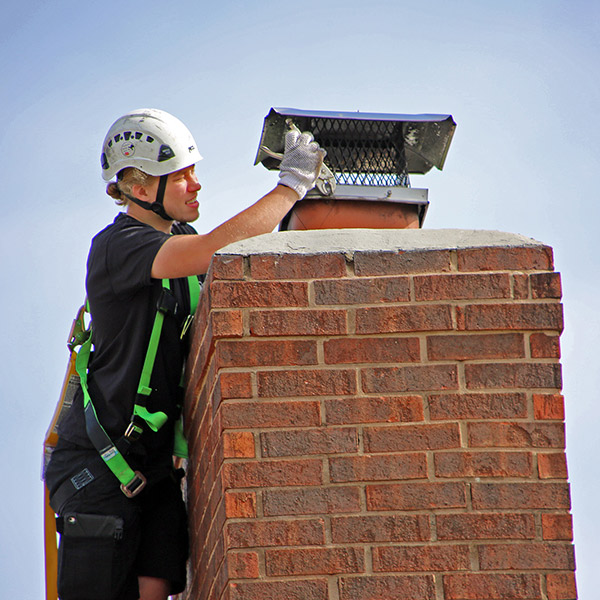 A chimney cap is an essential accessory for every home with a chimney. It plays an important role in protecting your house from water damage and fire. It also prevents critters from nesting in your chimney or getting into your home. While many homeowners are aware of the benefits of a chimney cap, often they do not realize that it is crucial to regularly maintain it between annual chimney inspections. A clogged chimney cap can be a hazard.
A chimney cap is an essential accessory for every home with a chimney. It plays an important role in protecting your house from water damage and fire. It also prevents critters from nesting in your chimney or getting into your home. While many homeowners are aware of the benefits of a chimney cap, often they do not realize that it is crucial to regularly maintain it between annual chimney inspections. A clogged chimney cap can be a hazard.
Why Chimney Caps Require Maintenance
Chimney caps have three main functions:
- Preventing rain, snow, and sleet from falling down the chimney.
- Catching hot embers that could ignite your roof or other combustible materials nearby.
- Stopping animals—such as chimney swifts, raccoons and squirrels—from getting into the chimney where they might die, make a nest or escape into your home.
The metal mesh around the sides of the chimney cap is what helps it to perform the last two function. As smoke passes through the mesh, any stray embers from the fire are caught and unable to exit the chimney. The mesh also blocks entrance into the chimney making it impossible for critters to fly or crawl inside. It needs to be regularly maintained because it can easily become clogged or obstructed.
If the metal mesh on the chimney cap is clogged or obstructed, it can prevent your chimney from venting properly. Your fireplace needs an adequate draft of outside air to feed the fire and smoke needs to be able to escape outside. When the metal mesh is blocked or clogged, carbon monoxide in the smoke may be unable to vent outside forcing it back down the chimney and into your home. Exposure to carbon monoxide can be deadly.
Causes of Chimney Cap Obstructions
There are two common causes of chimney cap obstructions:s
Creosote Buildup
Creosote is a tar-like highly flammable chemical compound that builds up in chimneys. It’s created when the combustion byproducts from a wood fire interact with condensation in the chimney. It builds up inside the chimney flue and chimney cap.
Debris
High winds and stormy weather can litter your roof with debris such as twigs, leaves, and trash. This debris can get wrapped around the chimney cap obstructing air from entering and smoke from existing.
 How to Maintain Your Chimney Cap
How to Maintain Your Chimney Cap
Build Efficient Fires with Seasoned Wood
You can reduce creosote buildup in your chimney and chimney cap by using only dry seasoned wood and building efficient fires. Seasoned wood is any firewood that has had at least six months to dry out since being cut. Unseasoned, or green, wood has a high moisture content which makes it produce thick black smoke that’s filled with combustion byproducts that will produce creosote. Seasoned wood produces fewer combustion byproducts when it burns. Stacking your wood with enough space for air to flow in between the logs is the best way to build an efficient fire. This helps the fire to burn hotter and consume more of the wood which also reduces the amount of combustion byproducts it produces.
Schedule Regular Chimney Cap Cleanings
Climbing up onto your roof to clean the chimney cap is a hassle. If you don’t have the right training and equipment, you could damage the chimney cap while you are trying to clean it. That’s why we recommend calling on a professional chimney sweep who can expertly clean the chimney cap. It is a small expense that can ensure the safety of your family while you are using your fireplace. It is a good rule of thumb to schedule a chimney cap cleaning after a large storm or if you notice draft problems when you try to ignite your fireplace. Usually, when the chimney cap is clogged, it will be more difficult to start a fire.
Give us a call if your chimney cap needs to be cleaned!



